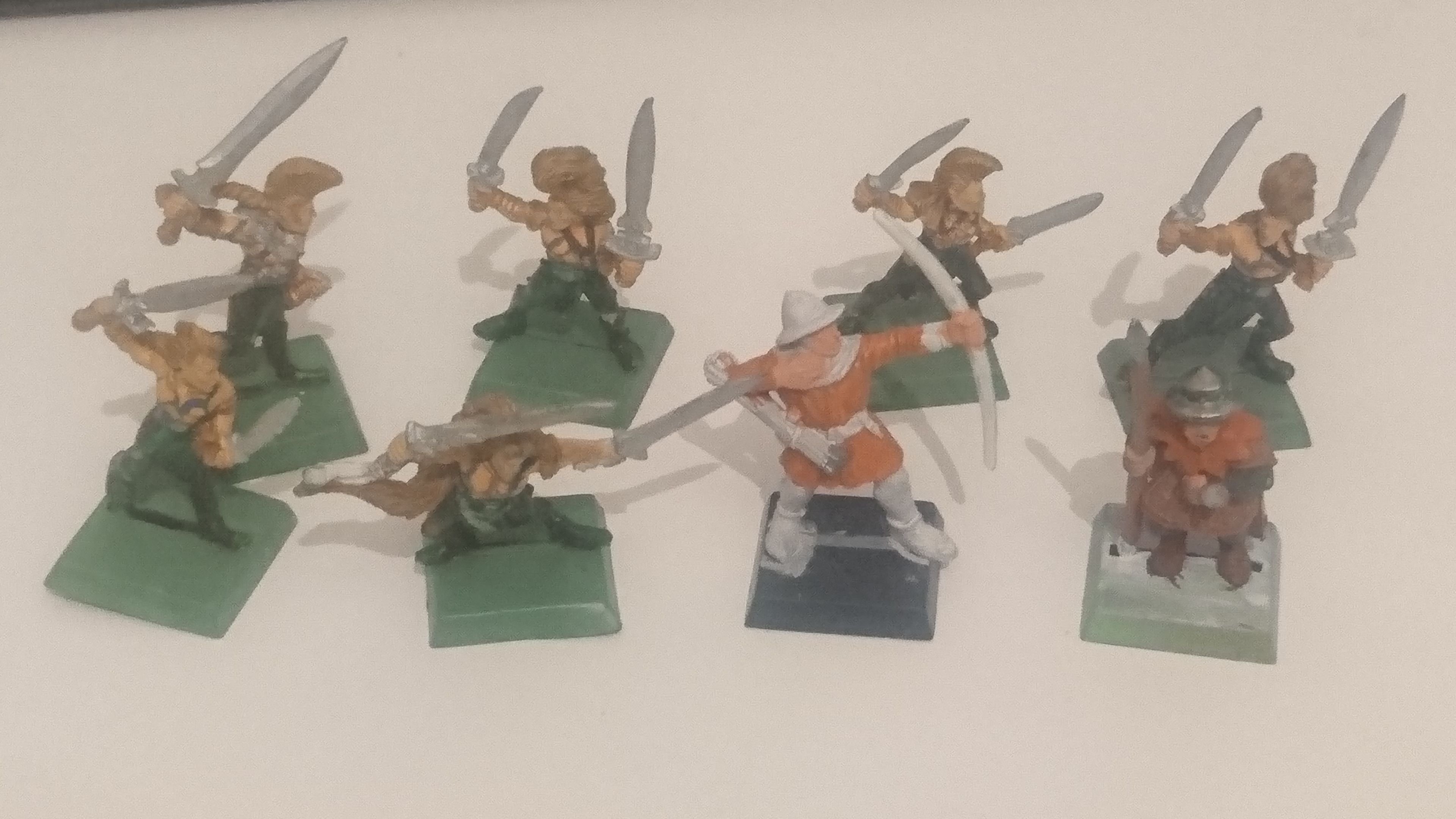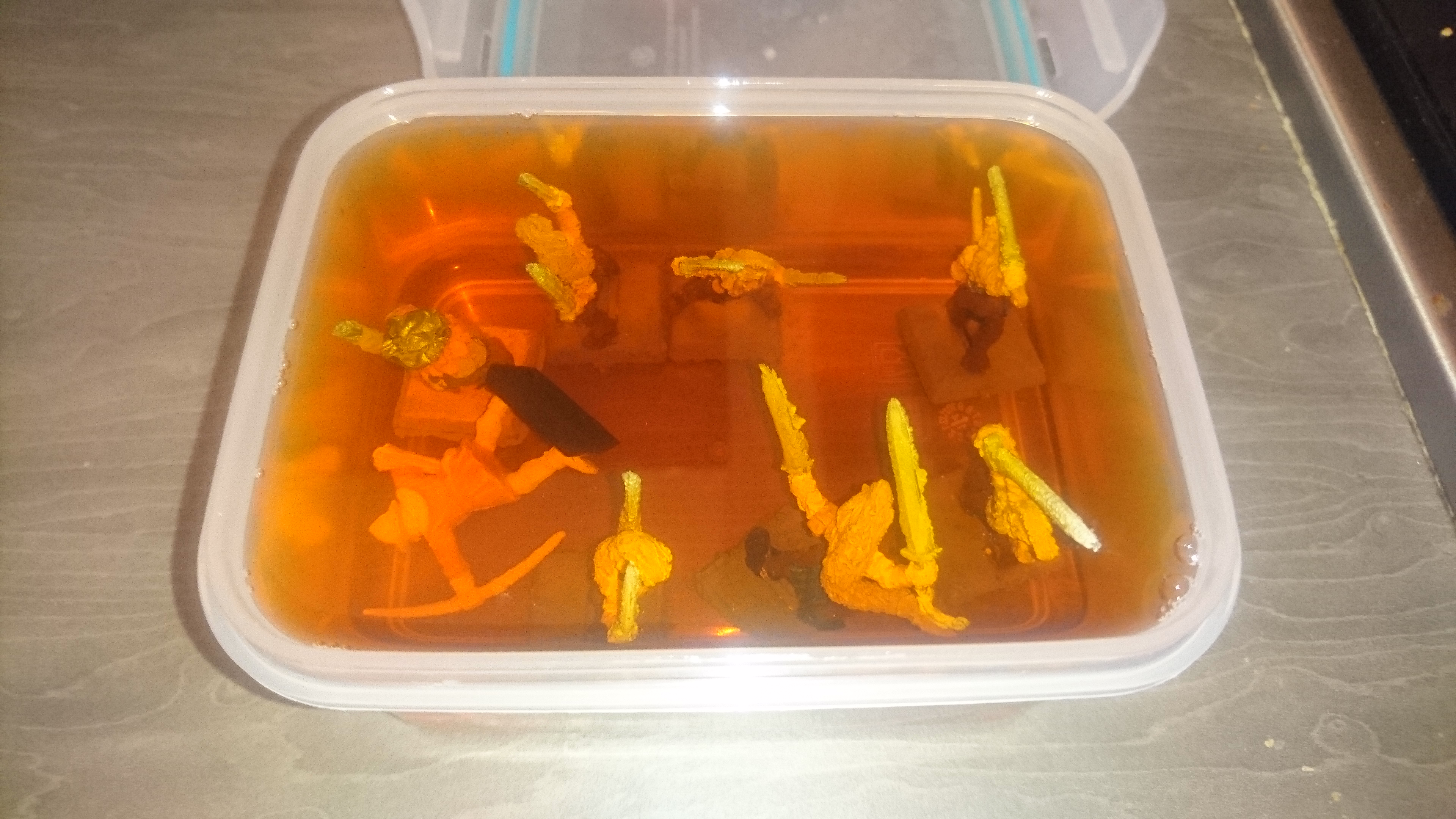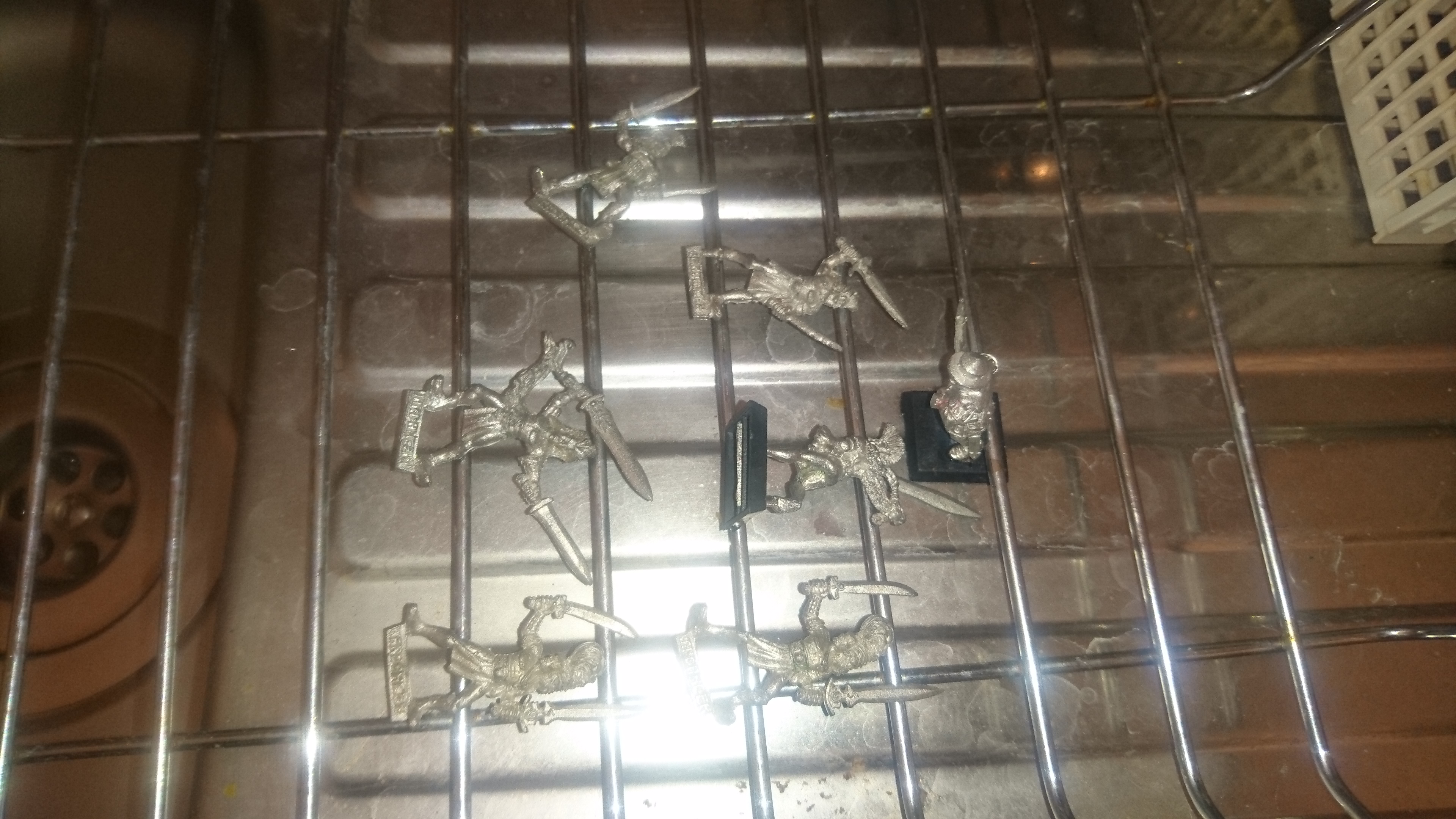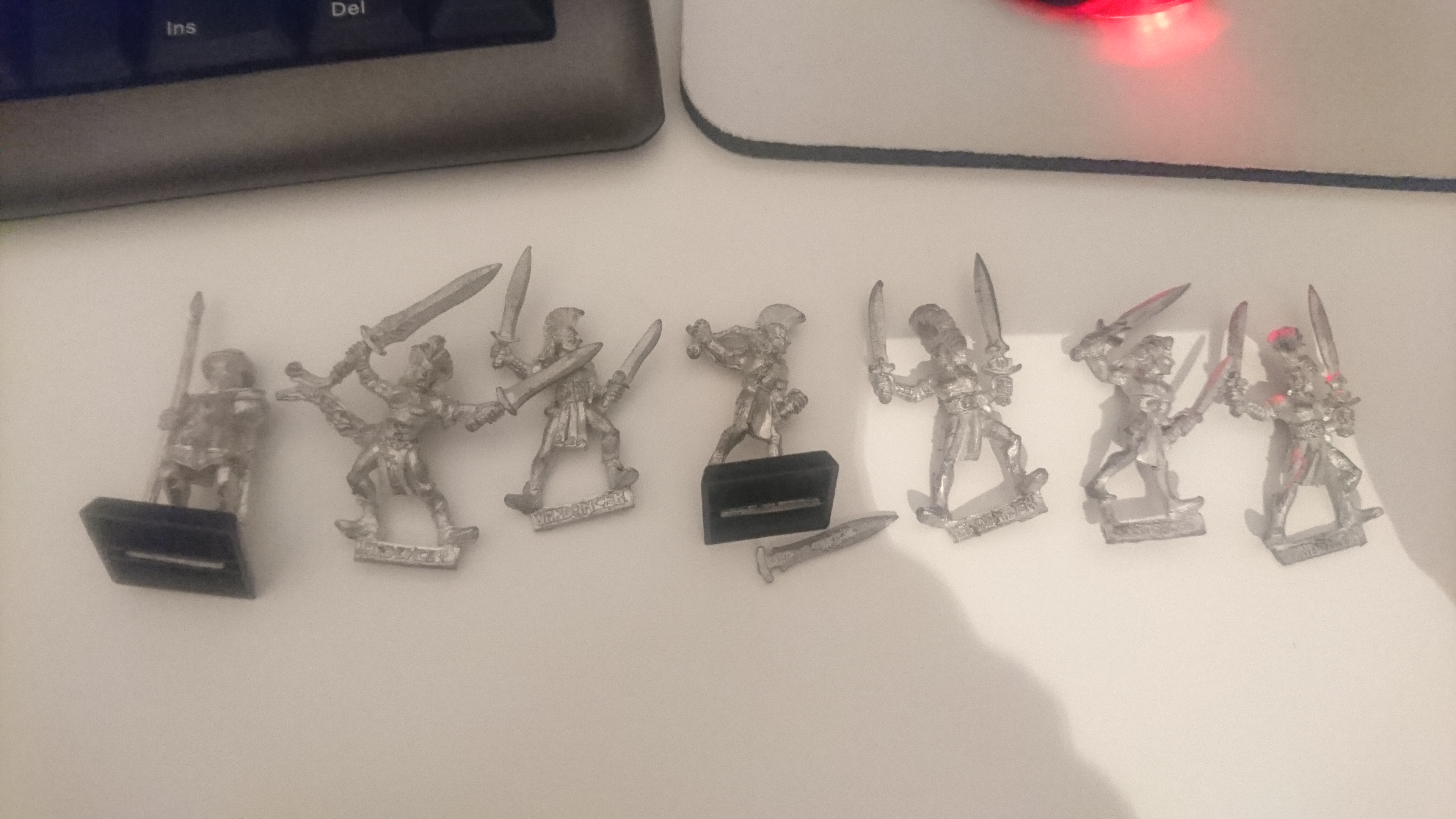Using Dettol to strip paint from metal and plastic minis
Having been on something of an ebay purchasing spree (more on that in later posts!) I found myself with a need to strip the paint off my second-hand bargains. Although I've never removed old paint jobs from minis before, I knew that other gamers and modellers had, so I hit the search engines for some research.
There were plenty of varied opinions about which method was most effective - BioStrip, brake fluid(!), Simple Green, and so on - all of which seem to have upsides and downsides. Overall though, most people seemed to agree that Dettol was both cheap and effective.
Not being someone who likes diving straight into a task, I found a great post over at Realm of Chaos 80s describing the process in detail. My experiences below are almost entirely owed to this post: http://realmofchaos80s.blogspot.co.uk/2014/01/how-to-use-dettol-to-best-clean-up.html
I'd recommend the above blog to any fan of miniatures and especially any nostalgic folk like me who enjoy old-school aesthetics.
The Test Candidates
Advice was to do a few minis at a time rather than attempting to strip too many at once, since it's a lot of scrubbing to do, and I was happy to limit the scale of my first attempt anyway. So I chose a few wood elf and Bretonnian models to go into the Dettol bath. These are shown below in their pre-Dettol state.
I picked only one plastic model as I was more nervous of the possible negative effect of the Dettol on plastic than on metal.

The models were covered in Dettol entirely (for which the tub was only just large enough) and left overnight - possibly even for two nights.
This was the result before scrubbing:

So far, so easy.
Next I took a new toothbrush (new purely for lack of a suitable old one) and started removing the now-loose paint. Indeed, most of the paint comes away in gooey strips, but I did find a healthy amount of scrubbing was needed to get the worst off. As per the advice from blog posts, a toothpick helped to get into really small cracks, but next time I'll perhaps use something firmer as the wood soon gets damp enough to no longer be useful.
It's recommended not to rinse the minis with water and having accidentally got some water involved at one point, I'd agree with that - it reacts badly with the paint/Dettol mixture and goes all 'clingy'. Instead I kept a spare pot of Dettol to hand and rinsed the minis in that. I made that harder than it needed to be by not having enough left over from the soaking - I didn't want to use the Dettol from the soaking tub as I intended to re-use it.
After the scrubbing I laid the models out to dry on the kitchen draining board.

I mentioned earlier that I didn't want to do too many models at once - this was a wise choice as after doing these eight, my back was hurting from standing over the sink and my head was swimming from the Dettol fumes! Even with both extractor fans on the kitchen stank for a few days afterwards. I would say do this with the window open or, better yet, outside.
The end result
For a first attempt, I'm very pleased with the cleaned-up models. I managed to break one of the swords off a wardancer while scrubbing but given that they were a cheap purchase, I don't mind making the repair. One slight exception is the plastic Bretonnian archer. I'm not sure whether the paint job had stained him orange or if I just hadn't scrubbed enough, but either way I put him back in the Dettol - many weeks later he is still there, so when I remember to get him out we'll find out whether a prolonged soak is bad for the plastic!

Conclusions
- Dettol works very well for removing old paint from models, both metal and plastic.
- Definitely ventilate the work area and wear gloves!
- Buy new gloves or risk the ire of the spouse
- It's a messy job so allow time for cleanup
- I used a whole £4 or so bottle of Dettol, of which I should be able to reuse most, but in general estimate £4 to strip say 20-30 minis
- Next time try dilute Dettol to reduce stench/save cash
